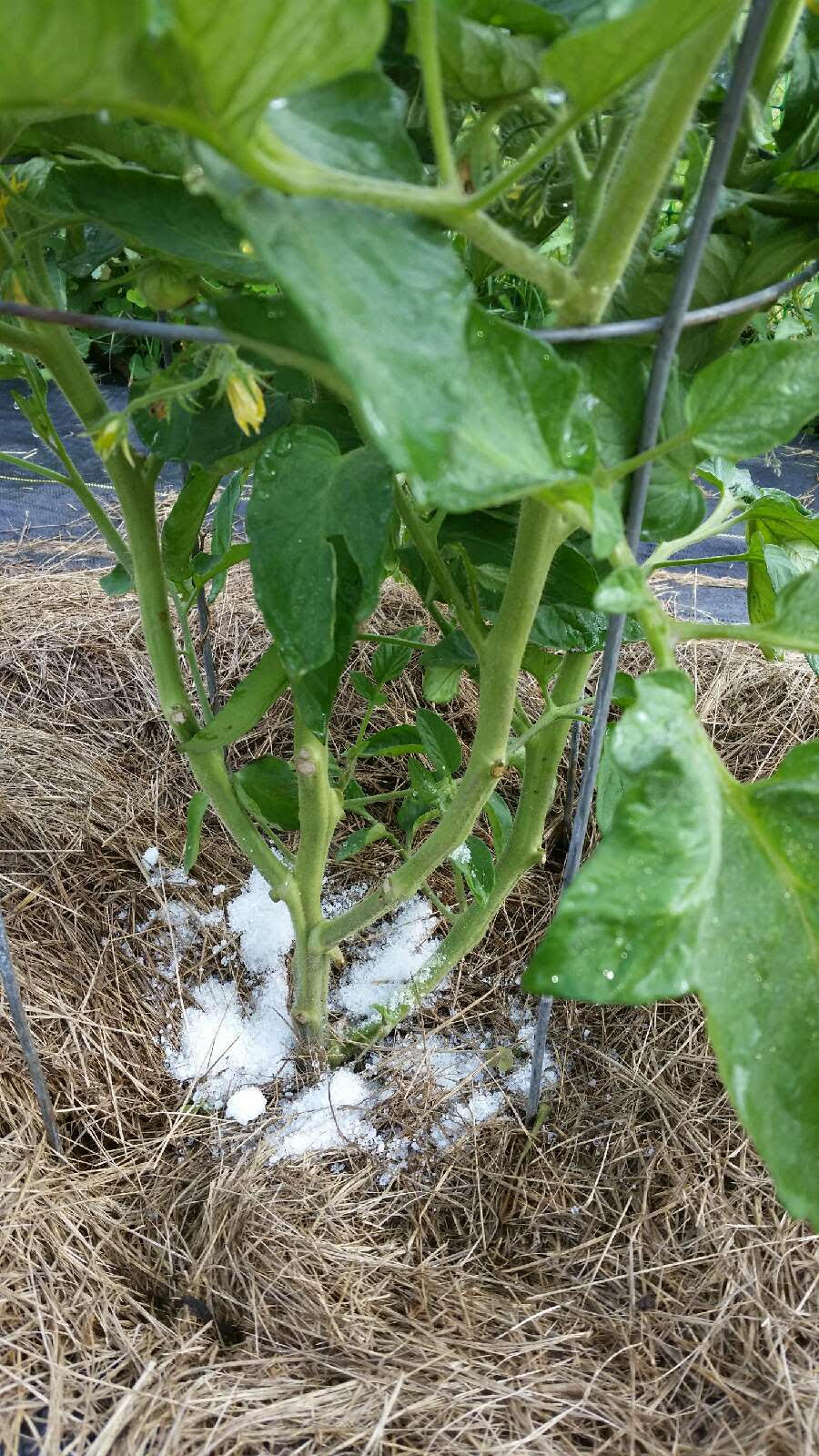Explore Why Some Plants Deny Epsom Salt as a Nutrient Source
In the elaborate world of plant nourishment, the rejection of Epsom salt as a practical nutrient resource by some plants positions an interesting problem. Regardless of its rich magnesium and sulfur web content, specific plant varieties appear to avoid this conveniently offered substance. The factors behind this selective behavior delve into a complicated interaction of plant absorption mechanisms, the distinct chemical structure of Epsom salt, and plant-specific nutrient preferences. Recognizing these aspects may shed light on the secrets of why some plants pull out of using this relatively useful nutrient resource.
Plant Absorption Mechanisms
In diving into the detailed world of plant absorption devices, it becomes evident that the process is regulated by an innovative interplay of physical characteristics and molecular paths. Plants take in nutrients largely through their roots, utilizing different transportation systems to uptake necessary elements such as nitrogen, phosphorus, potassium, and magnesium. Magnesium, an important part in chlorophyll synthesis and enzyme activation, plays a vital function in plant growth and advancement.
The absorption of magnesium entails a number of steps, beginning with its accessibility in the soil remedy. Once liquified, magnesium ions are occupied by plant origins via certain transportation proteins embedded in the cell membranes. These proteins promote the activity of magnesium throughout the origin cell wall surfaces and right into the plant's vascular system, where it is after that dispersed to various tissues to sustain numerous physical features.
Understanding the detailed mechanisms behind magnesium absorption in plants sheds light on how this crucial nutrient contributes to overall plant health and wellness and performance. By enhancing magnesium uptake pathways, farmers can enhance crop returns and top quality, underscoring the significance of comprehending plant absorption characteristics for sustainable farming techniques.
Epsom Salt Chemical Framework
The chemical structure of Epsom salt, also recognized as magnesium sulfate heptahydrate, reveals a distinctive setup of components that add to its unique properties and applications - what plants don't like epsom salt. Epsom salt is composed of magnesium (Mg), sulfur (S), oxygen (O), and hydrogen (H) atoms. The formula MgSO4 · 7H2O shows that each molecule is composed of one magnesium atom, one sulfur atom, 4 oxygen atoms, and 14 hydrogen atoms. The visibility of water molecules in its framework adds to its solubility in water. The 7 water particles are loosely bound to the magnesium sulfate substance, allowing it to liquify conveniently in water and be easily used up by plants via their origins.
The crystal framework of Epsom salt develops monoclinic prisms, which are lengthened crystals with identical ends. This crystal form affects the physical homes of Epsom salt, such as its texture and solubility. Understanding the chemical structure of Epsom salt is critical for understanding its actions as a nutrient resource and its communications with plants in gardening and farming techniques.
Plant-Specific Nutrient Preferences
Plants display distinctive preferences for specific nutrients, highlighting the significance of comprehending their individual demands for ideal development and growth. Comprehending these plant-specific nutrient choices is critical for maximizing crop returns, boosting decorative plant development, and advertising total plant health and wellness.

Plant-specific nutrient choices can likewise differ based on whether the plant is a monocot or dicot. Monocots, such as turfs and lilies, have different nutrient requirements compared to dicots like roses and tomatoes. Additionally, specific plants may show certain deficiencies or toxicities when subjected to insufficient or excess degrees of specific nutrients. By tailoring nutrient supplementation to satisfy the exact requirements of each plant species, cultivators can optimize plant growth, reduce nutrient waste, and assistance lasting farming practices.

Dirt Ph and Nutrient Uptake
Offered the vital function of plant-specific nutrient preferences in enhancing development and health, recognizing the connection between dirt pH and nutrient uptake becomes critical. Soil pH plays an essential duty in determining the accessibility of important nutrients for plant uptake. Different plants have varying pH choices for optimal nutrient absorption. For example, acidic dirts look at this site with a lower pH are positive for plants like azaleas and blueberries, while alkaline dirts with a higher pH suit plants such as lavenders and clematis.
Dirt pH affects the chemical kinds of nutrients in the dirt. In acidic dirts, nutrients like light weight aluminum, manganese, and iron can come to be a lot more available, but too much level of acidity can cause poisoning problems. On the other hand, alkaline dirts may restrict the availability of nutrients like zinc, iron, and copper, influencing plant growth. Keeping the ideal pH level in the dirt is essential for ensuring that plants can efficiently uptake the required nutrients for their healthy and balanced development and efficiency.
Hereditary Consider Nutrient Uptake
In the world of plant nourishment, the interaction of hereditary elements substantially influences the uptake of necessary nutrients crucial for plant development and growth. Hereditary factors play a pivotal function in forming a plant's capacity to absorb and use nutrients successfully.
Furthermore, genetic variables likewise determine the efficiency of nutrient uptake devices within plants. For example, some plants may have genetic attributes that improve their ability to scavenge nutrients from the dirt efficiently, providing an affordable advantage in nutrient-poor environments. On the other hand, hereditary variants can additionally cause constraints in nutrient uptake, making specific plants a lot more susceptible to shortages even when nutrients are bountiful in the soil.
Comprehending how genetic factors affect nutrient check here uptake is critical for developing methods to optimize plant nutrition and enhance plant productivity in various agricultural settings. By unraveling the genetic mechanisms entailed in nutrient uptake, scientists can work in the direction of developing genetically improved plant varieties with enhanced vitamins and mineral purchase capabilities.
Verdict

In the complex globe of plant nutrition, the being rejected of Epsom salt as a sensible nutrient source by some plants presents a fascinating dilemma. what plants don't like epsom salt. Comprehending these plant-specific nutrient preferences is crucial for maximizing crop yields, enhancing ornamental plant growth, and promoting overall plant health
By customizing nutrient supplementation to meet the specific needs of each plant species, cultivators can optimize plant development, lessen vitamins and mineral waste, and assistance lasting farming techniques.
In the world read the full info here of plant nourishment, the interplay of hereditary factors considerably affects the uptake of necessary nutrients crucial for plant development and growth. Understanding these intricacies in plant nutrient uptake is crucial for maximizing plant growth and health and wellness in agricultural practices.